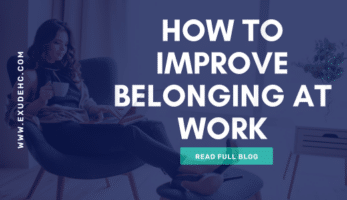Human Capital Management, Leadership, Total Rewards, Total Well-Being
Attracting & Retaining a Multi-Generational Workforce

A low unemployment rate and strong economy means it’s an employee’s market, making attraction and retention a key strategic objective for HR Professionals. In order to be attractive to the market and keep high performing employees, it’s essential for organizations to consider culturally valuable, long-term offerings that provide a positive employee experience and gives employees of all generations what they need at that point in their employee lifecycle.
Attracting, retaining, and motivating multi-generations requires an organization’s brand to be reflected both internally and externally. Employers articulate their brand in a way that is clear and resonates with all generations that are currently in the market. There are several things an organization can do to ensure employer brand and core values are built into the employee experience.
Internally
Policies & Procedures
The most important thing to remember from an internal perspective is looking at your human resource practices and ensuring that they are inclusive and encourage the thoughts and ideas of all generations. Ask yourself – are your meetings structured in a way that encourages people from all generations to speak comfortably, feel valued, and to share their best ideas without the fear of being shut down? Are they accepted regardless of their age/tenure? These simple practices can create a culture of inclusion and allow employees of all generations to thrive and be their authentic self in the workplace.
Pairing/Mentoring
To encourage relationships throughout the organization, you might consider pairing younger generations with older generations so that they have the ability to learn from one another. Older/more tenure employees that may be entering the last phase of their career can start sharing knowledge in a meaningful way with future leaders. These pairings should be structured in a way that builds trust, not in a way that feels like a burden to either party. If this practice is embedded into the culture of the organization, it opens endless possibilities for growth and opportunity.
Benefits
Are the benefits you’re offering meeting the needs of a multigenerational workforce? For example, younger generations are concerned with student debt, while the next generation of employees are starting families and looking for life insurance. The older generation is generally thinking about different retirement options. Offering customized plans that address the needs of employees throughout all stages of their life will show your commitment to them and make you a more attractive employer.
Flexibility
Flexibility is a benefit for employees of all generations. Whether it’s important to them to have life outside of work, make time for community involvement and volunteering, or raise a family, employees want to be able to work in an environment that supports their needs outside of the office. By being creative and understanding your workforce’s needs, you can provide flexibility in how the work is getting done. For example, your organization could offer things like condensed work weeks, flexible working hours, or even time during work to volunteer.
Learning & Development
Many organizations are getting away from the traditional career ladder and defined career paths. Instead, they’re finding that the generation entering the workforce would prefer to make lateral movements to create a stronger foundation and learn the necessary skills to prepare them for their future in the organization. Additionally, 68% of employees say that training and development is the most important workplace policy. By supporting this need, employees feel valued and are confident in their abilities as they move through different positions in the organization, regardless of their generation.
Externally
Many of the things discussed as an internal retention tool can also be used as an attraction tool, like benefits, flexibility, and learning and development opportunities. However, there are other best practices to ensure that your organizational brand is being properly represented in the market to attract the best talent.
Market Presence & Reputation
With several social media outlets and resources for employees to get information on organizations, it’s important to see how your brand is positioned on outlets like Glassdoor. In the age of crowdsourcing and technology being the epicenter of information, people are going to look at employees who are actually doing the job they are applying for to get information. Organizations should be checking how their brand is represented on these sites regularly because that’s where today’s workforce is doing their research.
Website
Another thing to be cognizant of when attracting talent is your organization’s careers page on your website. You want prospective employees to be excited to apply and join your organization. Companies with successful recruiting tactics on their website often include things like employee testimonials, videos, and even clips of senior leadership enticing people to apply.
Additionally, as previously mentioned, we know that things like learning and growth opportunities are important to today’s workforce. It’s important to showcase that your organization offers these opportunities in addition to any other benefits that might make you look attractive against competition in the market.
Attracting good talent and retaining them saves organizations a lot of time and money. Therefore, it’s important to ensure you’re creating a positive employee experience for everyone that works at your organization throughout all stages of their employee life cycle.







